![11 Customer Analytics Benefits [+Tools] cover](https://blog-static.userpilot.com/blog/wp-content/uploads/2023/09/11-customer-analytics-benefits-1_a3bfdb97b44a2490f4fe7c53c2d3ce53_2000.jpg)
Wondering how to leverage customer analytics benefits to drive customer satisfaction?
Customer analytics helps you seamlessly understand customers, predict their needs, and curate your offerings to their wants. It, along with product analytics, offers a comprehensive view of your customers and products and lets you make better data-driven decisions.
In this article, we’ll look into the customer analytics benefits and some of the best tools for getting customer insights.
Try Userpilot Now
See Why 1,000+ Teams Choose Userpilot

What is customer analytics?
Customer analytics is the process of collecting and interpreting customer data for actionable insights. With these insights, customer analytics support you in designing and building product strategies. Businesses can use customer analytics for various purposes, from adoption to retention to growth.
Are you unlocking the full potential of customer analytics?
Data can do more than just report the past. Take this 4-step assessment to see if you’re leveraging customer analytics benefits to drive future growth.
11 ways customer analytics help you drive product growth and customer satisfaction
Let’s look at the product growth and customer satisfaction benefits of customer analytics.
Lower customer acquisition cost and increase conversions
By refining and optimizing the conversion funnel with customer analytics, you can lower customer acquisition costs and increase conversions.
Here’s an example:
Rather than sending upgrade messages to everyone and relying on chance, you can analyze when and to whom you should send upgrade messages using segmentation.
After segmenting, you can then trigger in-app upgrade messages tailored to each user’s current journey, ensuring relevance and context. Just like Calendly, they set product usage limits for premium features and target users in free trials. As they exceed the limit, upgrade messages will pop up.
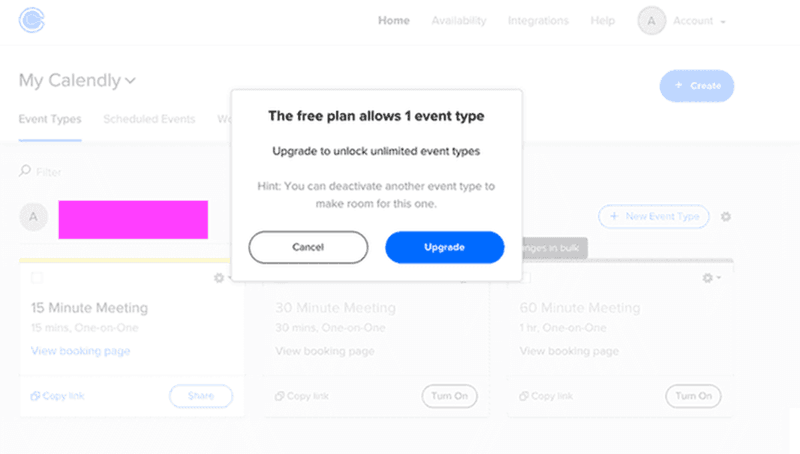
Higher customer lifetime value
Customer analytics helps you analyze user behavior to understand customer preferences. You can then tailor your product offerings based on specific customer segments, leading to increased customer satisfaction and, in turn, higher lifetime value.
For example, you can introduce your advanced features to the power users with timely product announcements. It shows them you’re continuously improving your product to meet their needs, making them feel valued and potentially increasing their loyalty.

Foster relationships and build customer loyalty
Harnessing customer analytics insights helps you understand your customer behavior and needs, allowing you to improve your features to build stronger relationships that promote loyalty.
You should analyze customer feedback to learn about your customers’ issues, needs, and wants. You then need to proactively work on closing the feedback loops to maintain healthy relationships with customers.
For instance, you can use in-app Net Promoter Score (NPS) surveys to understand customer loyalty. You can then easily identify the passives and detractors with an NPS dashboard, as it shows the scores and the percentage of each respondent category.
Tagging the NPS responses will help you see users’ common issues with your product. After that, you know where your product’s shortcomings are and can work on overcoming them to re-engage your passives and detractors.
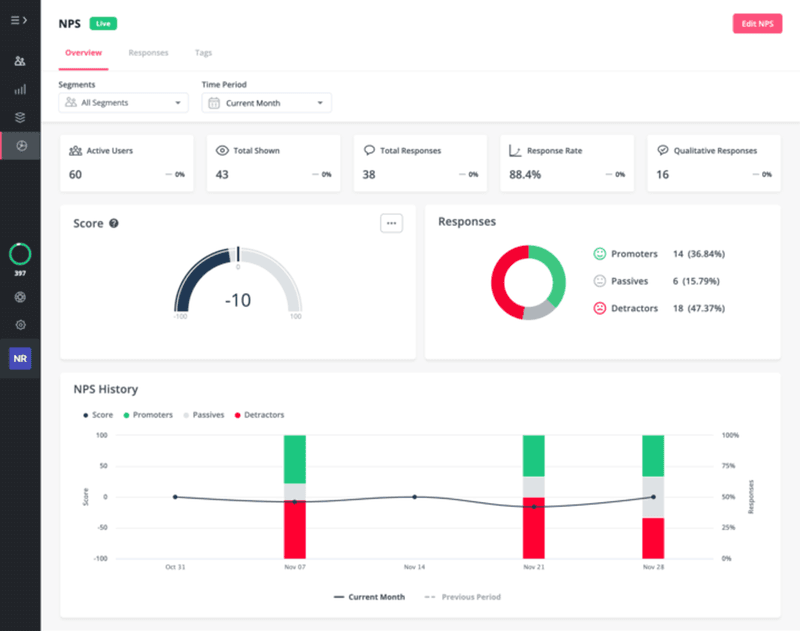
Deliver a more personalized experience using customer data
Segmenting customers with insights from customer data analytics lets you offer more personalized experiences to users.
You can segment customers based on their user roles or jobs-to-be-done (JTBDs). After segmenting them, you can better identify each segment’s preferences. You should then trigger relevant and personalized in-app experiences to their use cases.
For instance, in SaaS products, it’s a common practice to implement a welcome survey at the beginning of the user’s interaction with the product. This welcome survey collects vital persona data, which you can use to segment users and offer personalized experiences.
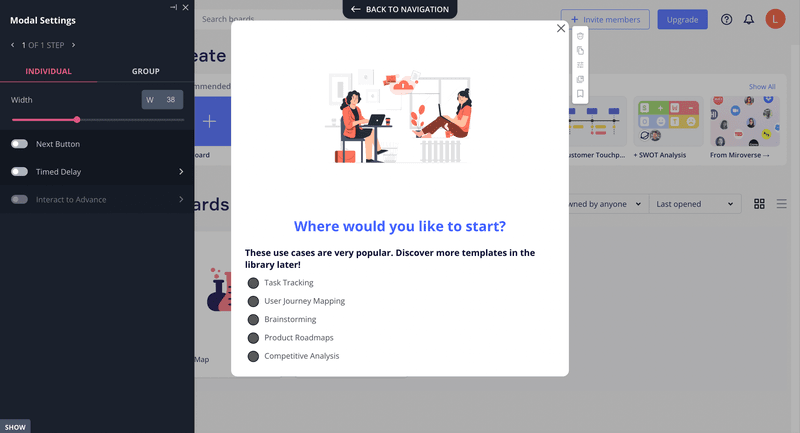
Improve your customer retention strategies
Customer analytics enables you to make data-driven decisions while building customer retention strategies. It helps you optimize product experience based on customer behavior while also taking preventive measures against churn.
For example, you can use funnels to analyze customer engagement across the customer journey to determine where your customers struggle. By setting up steps of your funnel and monitoring drop-offs, you can identify where friction occurs and take action to eliminate them.
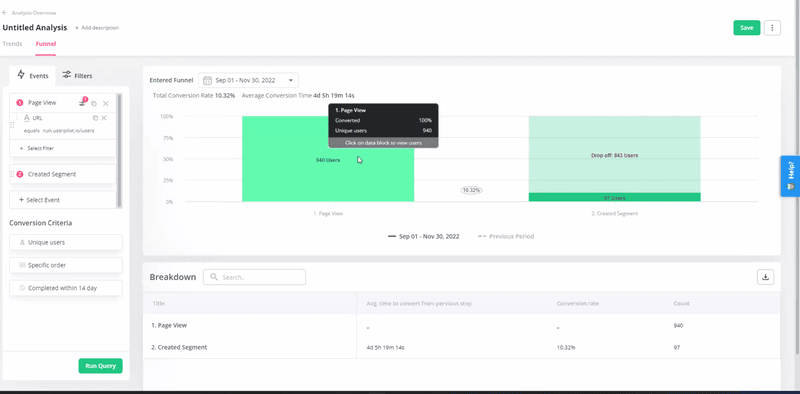
Increase customer engagement through optimization
Data-driven approaches like A/B testing with customer analytics will help you enhance your customer engagement.
You can use A/B testing to compare two versions of a flow against each other to determine which one has better engagement. It helps you stop guessing and optimize what works for you to increase customer engagement.
You can use either controlled A/B test or head-to-head A/B tests –
- Controlled A/B tests roll out onboarding checklists to 50% of users and nothing to the rest of the others (they’re the controlled group). You can then assess the engagement level of each group and see whether the checklist increases engagement.
- Head-to-head A/B tests offer the same experience flow in different ways to two groups. 50% of the users receive an onboarding checklist, and the rest receive tooltips. You then need to compare the effectiveness of these two flows in helping users complete onboarding and adopt a specific feature.
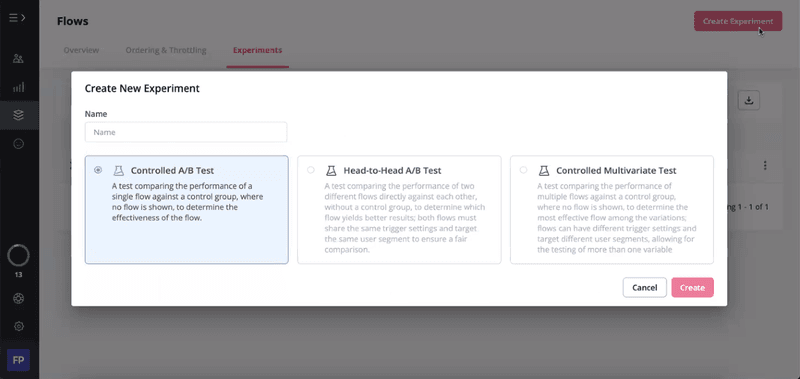
Refine features and product offerings
Customer analytics help you identify improvement opportunities by offering insights from customer feedback and behavioral data.
For instance, you may use feature tagging to identify the features with the lowest engagement. Combining this data with customer feedback will help determine whether users need more guidance or if the underperforming features need improvements. You should then work on these features to bring in engagement or completely rebuild them to offer better value.
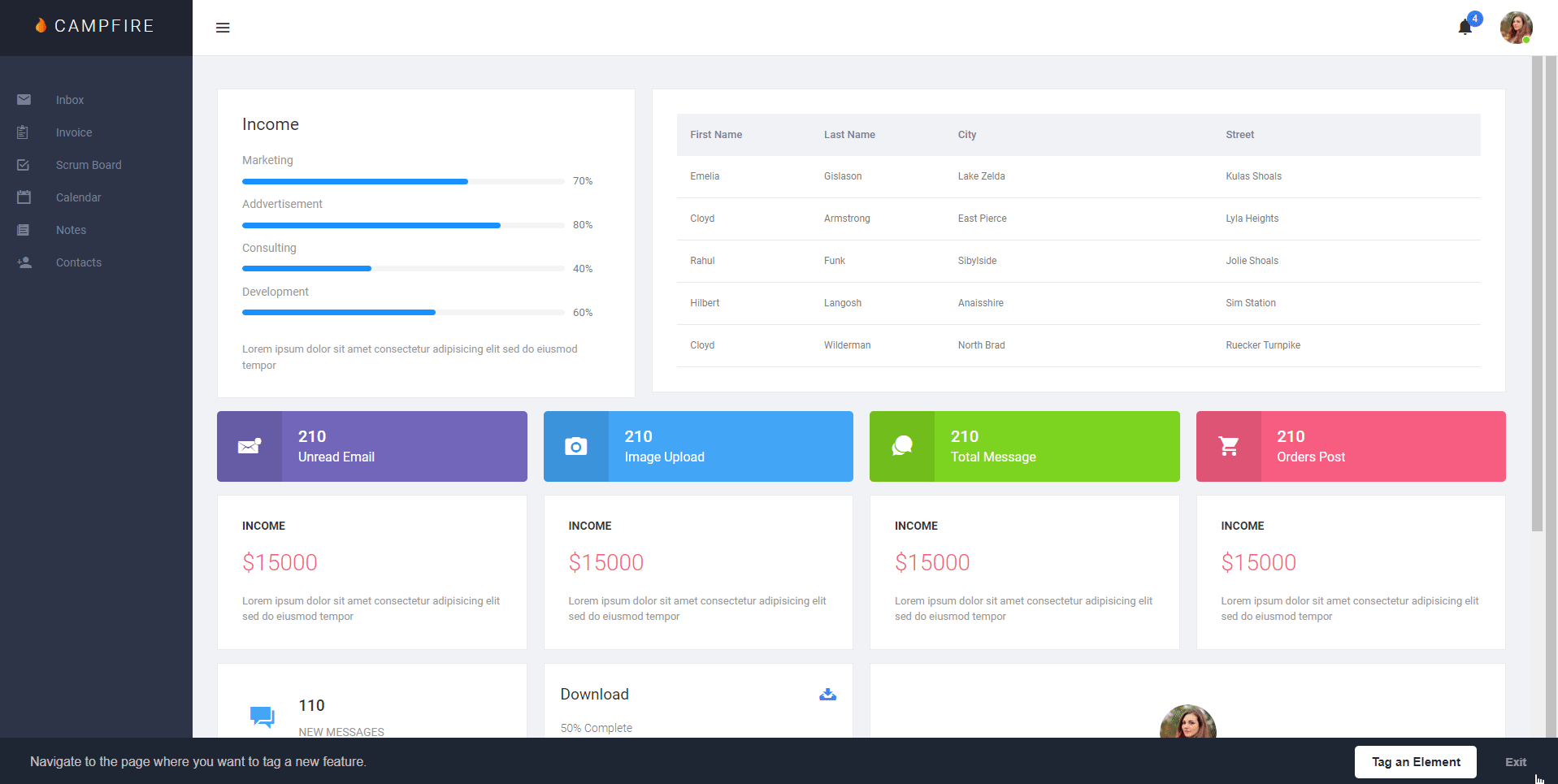
Prevent potential churn among existing customers
Analyzing customer data enables you to detect at-risk customers by assessing your users’ engagement levels. You can then reach out to the at-risk customers, address their concerns, and prevent potential churn.
For instance, you may use trend analysis to visualize event data. This will help you easily spot if the product or feature usage has dropped or the number of active users has decreased. If there’s a noticeable downward trend, you can identify the specific customer segments or individuals who are at risk and addres their specific needs and concern.

Ideas for developing your product roadmap
Customer analytics lets you better understand customer preferences by analyzing feedback and usage patterns. This insight into customer preferences tells you which product development you need to prioritize in your product roadmap.
For instance, you can analyze the response data from feature request surveys within your product to know what customers need the most. Your company should then decide which existing or new features to work on now and which to save for later.

Enhance the effectiveness of in-app communications
Customer analytics shows how customers respond to your in-app communications. Analyzing these responses gives you invaluable insights into their effectiveness and where you can improve.
Using collected data from customer analytics, you can trigger relevant and contextual in-app messages to the customers. For example, you may target trial users who have completed the onboarding flows to send them upgrade messages.

Provide better customer service
You can use customer analytics to constantly identify the common issues your customers face within your product.
You can take data-driven action to address these issues by refining your self-serve content to offer good customer service. The self-serve content empowers your customers to solve the problems on their own, reducing the support needed for solving tickets.
Your customer support team can then focus on more complex issues and improve your performance in customer support metrics, like reducing time to resolution. As a result, those who reach out for support with critical issues will also get help within less time.
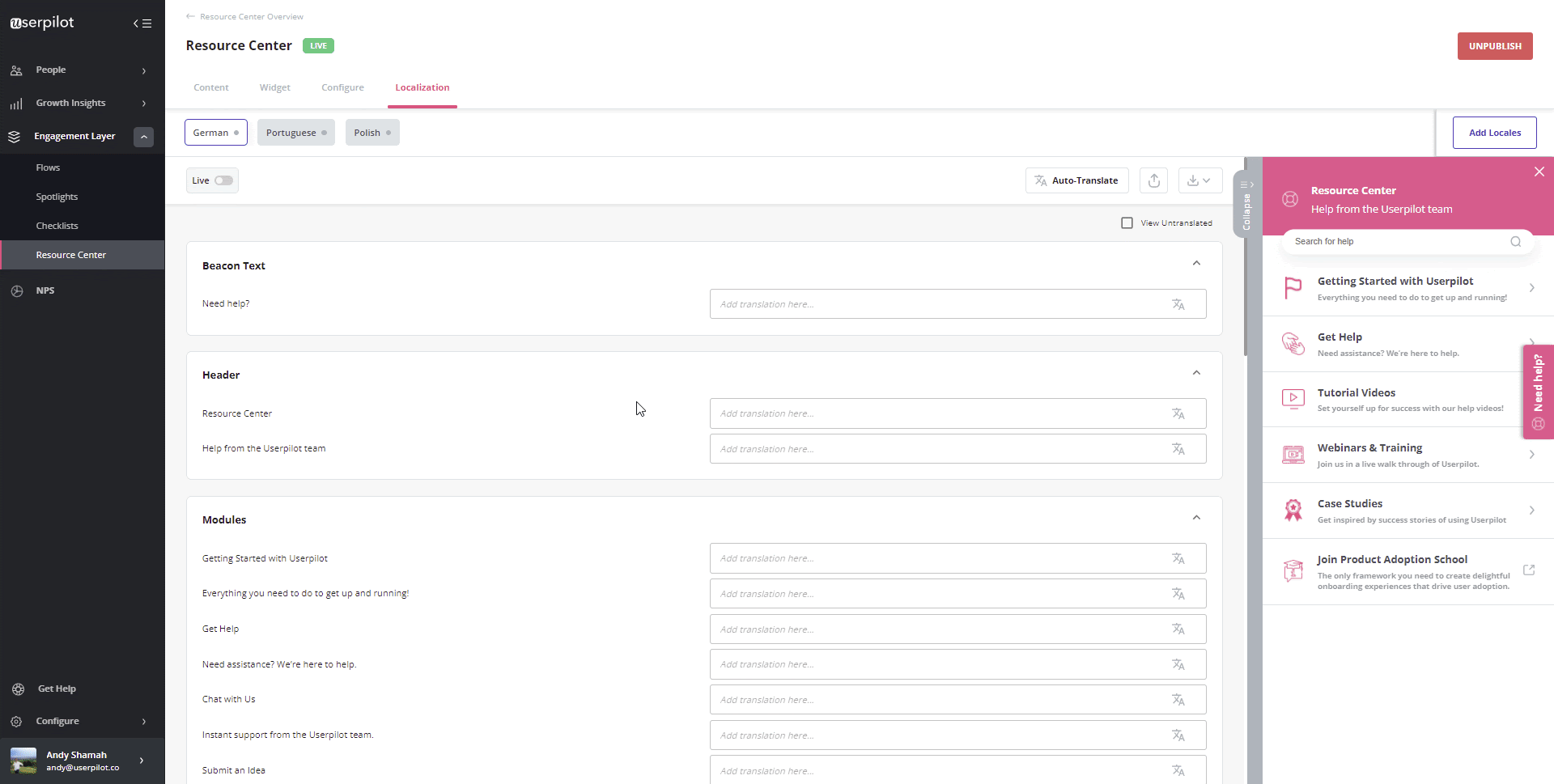
Most robust customer analytics tools for SaaS
Let’s look at the best customer analytics tools that’ll help you ensure a strong customer analytics process and leverage the customer analytics benefits.
Userpilot – Best for customer analysis and building in-app experiences
Userpilot is a powerful and no-code product growth platform enabling you to build in-app customer experiences.
With Userpilot, you can collect behavioral data using its event and feature tracking features. It also lets you create and trigger in-app surveys at various points of the customer journey to collect customer feedback.
Userpilot empowers you to analyze the collected data, too. Its advanced product analytics dashboard helps you quickly visualize and gain actionable insights about your customer base. Its segmentation capabilities let you group users based on their behavior, preferences, and engagement levels.
It also helps you to act on customer insights with multiple UI elements for building in-app experiences. You can use the in-app modals, tooltips, etc., to enhance your customer experience.
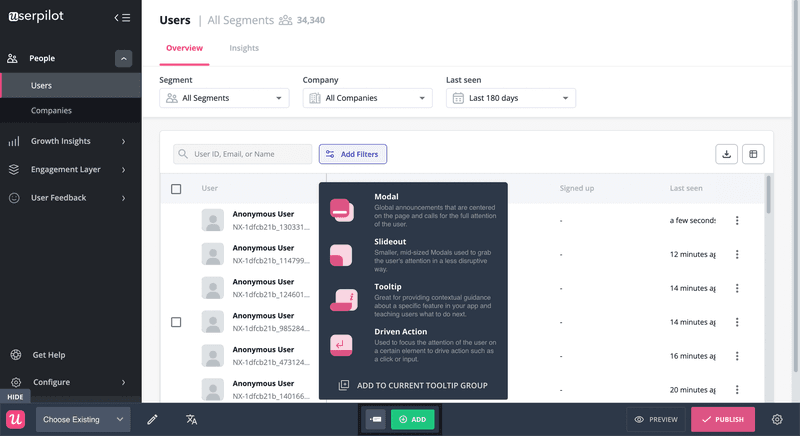
Amplitude – Best for customer journey analytics
With Amplitude, you have a powerful analytics tool to understand complex customer journeys. It collects event data by tracking interactions and engagements to help you visualize the customer journeys.
Amplitude also offers customer experience analytics across multiple touchpoints to find out actionable insights. It further tracks event sequences to decipher the choices users make in their progression paths.

Heap – Best for tracking and analyzing customer interactions
The next tool, Heap, is a comprehensive product analytics and customer behavior platform. Heap lets you collect data by defining events to track customer interaction for mobile and web apps. It also can automatically collect data from the events without requiring you to define them.
Heap helps you analyze data along behavioral segments and perform user-level interaction tracking. You can receive real-time reports from Heap to better understand what’s going on in your product.
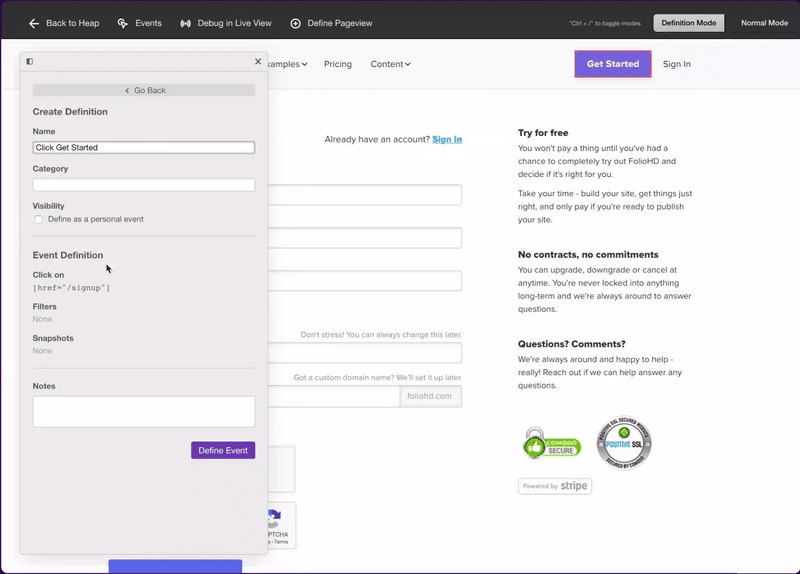
Conclusion
You need to get your hands on the customer analytics benefits to continuously satisfy your customers’ needs. These benefits improve user retention, customer loyalty, and overall product growth.
Want to get started with customer analytics benefits? Get a Userpilot Demo and see how you can improve your product with customer analytics.







